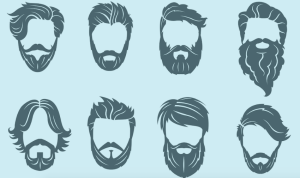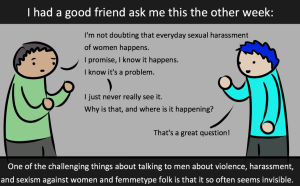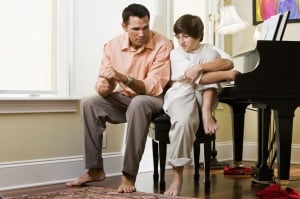Originally published on The Body is Not an Apology and republished here with their permission.
When I see someone teaching kids to hate their bodies, I’m mad.
I’ve spent the bulk of my career as a therapist helping adults to let go of body shame, and I know that the roots of this dissatisfaction often starts during childhood.
A recent study of 111 girls revealed that by age five, 50% of these kids had internalized the thin ideal.
Many of my clients have spent the decades since their childhood at war with their bodies and their appetites in search of thinness, a preoccupation that saps their energy and interferes with living life fully.
Kids who feel bad about their body size and start dieting are at about three times greater risk for binge eating, weight gain and other eating disorders compared to their non-dieting counterparts.
When a children’s book called Maggie Goes On a Diet came out a few years ago, promoting a message of weight loss for young girls in order to be popular and successful—well—that just crossed a new line for me.
Teaching kids to hate their bodies and judge other people based on weight through a children’s story is just plain wrong. And telling kids that dieting is the way to become happier and healthier, when there is no scientific evidence to support long-term success, is harmful to the very audience this book is intended for.
I did some research and was surprised to find that there’s a big gap in children’s literature on body image: Very few books offer positive messages to teach kids how to feel strong and confident in their bodies.
Illustrator Elizabeth Patch and I decided to collaborate on a story that would help kids reject body shame, learn that people naturally come in all shapes and sizes, and reaffirm the beauty and positivity of accepting who you are and following your dreams.
We also hoped that adults would realize the harm caused by negative comments about weight, as well as the power they have to support kids in feeling good about their bodies.
Amanda’s Big Dream is the story of a girl who loves to skate and dreams of a solo in the Spring Ice Show. When her coach makes a comment about her weight, Amanda loses her confidence and quits. But with the help of her parents, doctor, and best friend, Amanda learns what it means to follow her dreams, at any size.
Helping kids feel good about their bodies in this fatphobic culture isn’t easy, and we need to be able to talk about body size in an open and non-judgmental way.
Children are like sponges! Not only will they be exposed to messages in the media and on the playground, as members of this weight shaming culture, parents often their own attitudes toward weight that are passed down – often unintentionally – to their children.
While we can’t control all of the messages our children will receive, we can do our best to make sure we aren’t contributing to the negative ones.
Here are nine common mistakes parents make about their kid’s weight and what we can do instead to ensure our children know that we will support them in the bodies they have right now!
1. Bashing Your Body
Kids are born loving the bodies they have. Just watch them explore their fingers and toes as infants, and run, skip and jump as toddlers and pre-schoolers.
They aren’t born thinking one size is better than another until the adults in their world tell them that thin is better than fat.
Your child wants to admire you.
If you stand in the mirror and make comments like, “These jeans make me look fat,” or “ I have to lose weight before I can wear a bathing suit,” your child will quickly get the message about what which bodies are worthy – and which ones are not.
Instead, imagine looking in the mirror and uttering the words, “I like the way this dress looks on me,” or “I feel beautiful.”
What a beautiful message to pass down to your child
If you’ve always struggled with your body image, it may feel like quite a stretch talk positively about yourself, so start by trying to let go of the negative messages.
But also consider that by speaking kindly about your body, your child will learn that positive feelings are not dependent on a particular weight.
As you and your child stand in front of the mirror, celebrate what makes each of you special.
2. Promoting Diet Behavior
It’s become normal in our culture to say, “I can’t eat that – I’m on a diet.”
These words send out a message that depriving yourself of the foods you enjoy is a positive way to go about eating, and that weight loss trumps just about everything.
Many kids are also told that they shouldn’t eat the cookie or pizza because it’s fattening. Children absorb the message that weight loss is a worthy goal, despite the fact that kids who diet are at greater risk of weight gain, binge eating, and other eating disorders, compared to their non-dieting counterparts.
Instead, don’t talk about your diet in front of your children – or better yet, don’t diet! Disconnect conversations about eating from any weight focus.
Adults often have their own issues with food and body image because they, too, have absorbed cultural messages that overvalue thinness.
If you’re caught in the diet/binge cycle, seek out resources such as The Diet Survivors Handbook” 60 Lessons in Eating, Acceptance and Self-Care that can teach you to develop a healthy relationship with food: honoring your physical cues for hunger and fullness as you end the deprivation of dieting and choose from a wide variety of foods.
3. Laughing at Fat Jokes
Fat people continue to be the target of jokes.
If you find humor at the expense of shaming another person about their size, kids will learn early that it’s okay to make fun of the higher weight child on the playground. And higher weight kids will get the message that their weight is a source of shame.
Weight bullying is the number one type of bullying that takes place at schools, and participating in fat jokes gives permission to tease peers based on weight.
It also teaches kids that, as adults, we believe it’s okay to single out a particular group based on physical characteristics that are different from us, a message that promotes an attitude of intolerance toward other human beings.
Instead, turn these jokes into a teachable moment to share your values about size diversity with your child.
Depending on the age of your kid(s), help them understand that these types of jokes are based on stereotypes, which make unfair assumptions about people who are fat.
Teach them that jokes based on weight hurt people’s feelings and contribute to weight stigma.
Everyone (including them!) deserves to be treated with respect. Humor is a wonderful outlet – share a joke that you find truly funny!
4. Referring to Food as ‘Good’ and ‘Bad’
There’s so much focus on “healthy” eating these days that it can be confusing for parents to know how to feed their children. Too much fat? Too many carbs? Gluten free? Paleo?
Of course, it’s important for kids to have access to nutritious foods, just as it’s important for kids to eat foods that taste good.
Too many children are becoming obsessed with healthy eating (which is often a disguise for diet behavior) and therefore aren’t learning how to eat all types of foods, which is an important skill.
The flipside is that many kids will eat the “bad” foods when they’re away from you – whether they’re hungry for it or not.
Instead, teach your kids how to have a healthy relationship with food, instead of just eating “healthy” foods.
Help kids recognize and honor cues for hunger and satiation by providing a wide variety of food and letting them decide what and how much to eat. Talk about foods in a non-judgmental way.
Children can learn that some foods are more nutritious and help their bodies grow strong; other foods are less nutritious, but taste good.
If you’re concerned about the connection between health and weight, read up on the Health At Every Size approach so that you can support your child’s health and well-being without a weight focus.
5. Treating Children Differently Based on Their Size
I know of kids who are required to exercise every day while their sibling is not, and children who aren’t allowed to have dessert while their siblings are. This type singling out fatter kids leads to feelings of shame that can – and do – last a lifetime.
Instead, decide what behaviors are age-appropriate for your children, and apply them equally to kids of all sizes (unless there is a specific health/mental health issue).
Whatever behaviors you value for you family, be consistent. Exceptions might include a child who needs to be dairy free due to lactose intolerance or a child diagnosed with an eating disorder that has a specific meal plan as part of treatment. The key is to take the pursuit of weight loss out of the equation.
6. Talking About Exercise as a Weight Loss Method
“I have to exercise because I ate too much” or “I need to workout more to lose weight” are typical comments people make these days.
And the message we give to our kids? Exercise is punishment for eating the wrong foods, and the main reason to exercise is to change your body.
This sets kids up to hook physical activity with being fat – or the fear of becoming fat – and interferes with children’s natural love of moving their bodies because it’s fun and feels good.
Instead, keep in mind that physical activity, appropriate for a person’s ability, can be a source of pleasure and/or fitness.
Participate in enjoyable activities with your children that involve moving your body (walking, swimming, playing catch, gardening, to name a few), and reflect back the joy they experience – as well as your own – when engaging in physical activity.
Encourage kids of all sizes to participate in sports or activities that appeal to them.
7. Complimenting or Commenting on Other People’s Weight
We’ve all heard (or even made) comments such as “You look great – have you lost weight?” or “I can’t believe how much weight they’ve gained.”
When our children hear these words, they learn what’s valued when it comes to body size. They also learn that it’s acceptable to judge other people’s bodies.
If we tell kids that they look great because they have a thin build, what happens if they gain weight? And if a teen loses weight and we compliment them, what happens if the weight comes back?
Commenting or complimenting people based on body size is a recipe for shame.
Instead, best to say nothing!
If someone you know has lost weight and is looking for a compliment, consider saying something like “I’ve always valued our friendship no matter what size you’re at!”
We need to model for our kids that bodies (including theirs) are not up for discussion. If children want to talk about the topic of weight, create safe ways to have open and non-judgmental conversations that respect weight diversity.
The Healthy Bodies Curriculum by Kathy Kater, LICSW is an excellent way to bring this issue into the classroom.
8. Focusing on Your Child’s Weight
Ask anyone who was fat as a kid what the adults in their life said them about their bodies, and chances are you’ll hear things like, “You’d be so pretty if you lost weight” or “No one will want to date you if you’re fat.”
Shame is insidious, and we’re hurting kids when we give them the message that thinness is the only road to becoming happy and successful in this world.
Instead, focus on their character or accomplishments.
If you make appearance-based comments, compliment the cute t-shirt, the new hairstyle, or even how strong they are when they help you bring in the groceries.
If you have reason to suspect an eating disorder, including binge eating disorder, contact an organization such as NEDA, BEDA or ANAD for the best way to talk with your child.
9. Missing the Opportunity to See Weight as One More Aspect of Diversity
Where did we ever get the idea that among human beings, there is only a very small window for the physical size of attractive and healthy bodies?
Body size has a genetic base, and equating body size with health issues means that people often turn to unhealthy practices in order to try to change their physiology – a nearly impossible task that often leads to poorer health, getting caught in the diet-binge cycle, eating disorders, and a culture that reeks of weight stigma.
Instead, let your children know that weight is a characteristic, not a behavior.
Just like they don’t get to decide how short or tall they’ll grow to be, or the color of their skin or eyes, they don’t get to choose their weight range.
The current focus on helping kids celebrate diversity when it comes to race, religion, ethnicity, gender and sexuality must also extend to helping them understand the natural diversity of body size.
***
As we teach our kids to accept – and even embrace – the many differences among human beings in all areas, we need to include the diversity of body shape and size in our conversations and in our actions. If you find that you carry your own internalized weight stigma, you’re not alone.
Remember to practice self-compassion as you work toward acceptance of others – and of yourself!
Whether it’s building a positive body image on an individual level or working toward ending weight stigma on a cultural level, these are precious gifts to give our next generation of children.
Resources for Kids:
- Amanda’s Big Dream by Judith Matz
- Your Body Is Awesome by Sigrun Danielsdottir
Resources for Adults:
- The Diet Survivor’s Handbook by Judith Matz and Ellen Frankel
- Beyond a Shadow of a Diet by Judith Matz and Ellen Frankel
- Health At Every Size by Linda Bacon
- Body Respect by Linda Bacon
About Kids:
- Healthy Bodies: Teaching Kids What They Need to Know by Kathy Kater
- Your Child’s Weight: Helping Without Harming by Ellyn Satter
- Helping Your Child With Extreme Picky Eating by Katja Rowell and Jenny McGlothlin
- Raising An Intuitive Eater: What Works With Kids and Teen in Intuitive Eating by Evelyn Tribole and Elyse Resch
[do_widget id=’text-101′]
Judith Matz, LCSW is a Clinical Social Worker, author of Amanda’s Big Dream and co-author of The Diet Survivor’s Handbook (2006) and Beyond a Shadow of a Diet (2nd edition, 2014). Check out her books Amanda’s Big Dream and The Diet Survivor’s Handbook and check out her personal website at www.judithmatz.com.
Search our 3000+ articles!
Read our articles about:
Our online racial justice training
Used by hundreds of universities, non-profits, and businesses.
Click to learn more





















